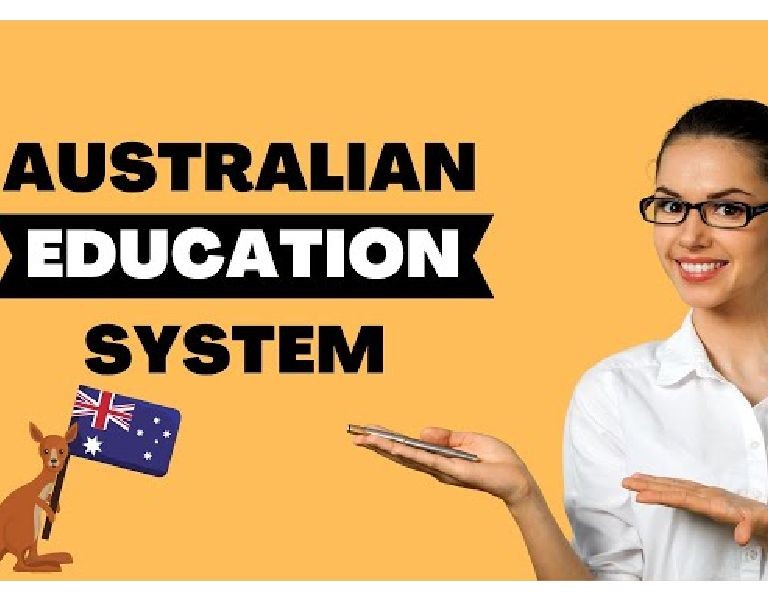Australia has much more to offer than just the wide-open landscapes, koalas, kangaroos, and picturesque tourist spots that come to mind when people think of it. Australia is now the third most popular country in the world for students looking to study abroad. It is home to some of the best schools in the world, offering top-notch education in a variety of fields. The unique curriculum provided by the Australian educational system is closely controlled by the Australian government to uphold a specific level of education. If you're considering studying in Australia, why not? Here is a thorough blog that will provide you information about the key components of the nation's top-notch educational system.
Understanding the Australian Education
Australia's well-structured and organised educational system is well-known on a worldwide scale.
- The age at which preschool education begins, which might vary somewhat from state to state, is either 5 or 6. This level of education can be provided individually or in a school setting and is not required.
- Australia requires all students to complete primary and secondary school. The education system has built a common curriculum to give each student an equitable education and a foundation of knowledge thanks to the abundance of primary and secondary schools throughout the nation. Even if there may be certain states where the curriculum is somewhat adjusted, the real curriculum established by the Australian educational system strives to foster the vital skills and information that each student should have in order to succeed in life.
- International students have a variety of options and chances across a number of academic fields at universities and institutions for higher education inside the Australian educational system. Majorly famous for its research and development, Australian universities' study programmes make sure that students have the information, skills, and reflective qualities they need to achieve and keep professions as well as contribute to the development of the country. This is why graduate employability is given particular attention in the nation's academic strategic goals. Furthermore, the employability strategies include industry visits in addition to only on-campus hiring.
Key Features
Academic success may boost a learner's self-esteem and help them develop a good self-concept. The Australian educational system presumably takes this into serious consideration and advocates for an inclusive and high-quality education throughout the nation.
Let's talk about a few salient features of the Australian educational system:
1.Academic Years:
The length of the academic year in Australia's education system varies based on the kind of study a student is doing. There are several institutions that offer second-semester or mid-year starts. However, depending on the subject and the relevant school, different start dates and semester lengths apply. Students are thus recommended to visit the website of the relevant school before continuing with their applications. An overview of the academic calendar for Australia's various educational levels is shown below:
| Schools | |
| Length | Total of 13 years (including kindergarten) |
| Semesters | 4 (usually called terms) |
| Start | Late January or early February |
| Vocational Education Training | |
| Length | 1 to 4 year |
| Semesters | 2 |
| Start | Early February, however, timing varies depending on the institution. |
| Undergraduate Courses | |
| Length | 3-year (4-year honours degree) |
| Semesters | Typically, there are two semesters, however some institutions include trimesters. |
| Start | Early March, however timing varies depending on the institution. |
| Postgraduate Courses | |
| Length | 1-2 years |
| Semesters | Typically, there are two semesters, however some institutions include trimesters. |
| Start | Early March, however timing varies depending on the institution. |
| Doctoral Courses | |
| Length | three years + a one-year review period |
| Semesters | There are often no official semesters for PhD candidates because the majority do not attend classes. |
| Start | Start dates can be negotiated with PhD advisors. |
2.Australian Framework of Qualification
The Australian Qualifications Framework (AQF), which distinguishes it from the educational systems of many other countries, defines the Australian educational system. A nationwide strategy that was formed in 1995, the AQF covers the Senior Secondary Certificate of Education as well as other tertiary education qualifications. Further education and training in occupational fields are also included.
Ten levels and a single national system comprise the AQF, which links academic, vocational, and postsecondary education credentials. You can move effortlessly between academic levels and between institutions as long as you complete the requirements for a student visa. Flexibility and alternatives are provided for career planning. You can prepare for both further education and the workforce by obtaining any of the AQF credentials. If you're seeking an AQF qualification, you may be certain that your school has received national accreditation and government approval, and that your diploma or other AQF award will be genuine.
Regardless of your study or job ambitions, it is straightforward to transfer between courses or institutions within the educational system because of official agreements and frameworks for recognition. Every step of the journey will help you in the future. All around the country and the world, their institutions are connected.
3.Education Pathways in Australia
The Australian Education system provides route education, often known as foundation courses, for students who do not fulfil the admission criteria for a particular programme. Depending on your topic of study and past academic achievement, there aren't many possibilities to register in your selected college. Usually, the options include:
- Attending courses in a school in Australia
- Attending a school in Australia to take a preparatory course in English
- Vocational Education and Training for College Courses on the Pathway to the University
Difference Between Indian and Australian Education System
The following are the main distinctions between the educational systems in Australia and India:
- Both countries place a strong emphasis on education as a whole. Before focusing on the theory aspect, a typical Australian student will first apply the principles practically. In contrast, the Indian educational system places more emphasis on the theoretical foundation of learning than on the practical side of learning.
- Both countries have distinctive uses for technology. In India, there are several restrictions on how technology is used in education. Its student body has to be expanded because it now has a fairly limited variety of pupils. Various universities and colleges should focus more on instructing students how to use available technology intelligently if they want to compete with worldwide levels of education. It is also extremely different in Australia. There, pupils' intellectual progress is assessed rather than only tested. Every student is required to complete a number of tests as a consequence, and only those who do the best are rated and considered during the educational process.
- Because it is so out of date, India's educational system has to undergo some significant adjustments as soon as feasible. It is crucial to increase educational standards as the concepts of globalisation and outsourcing gain hold.
Some Facts and Figures
Australia, one of the most progressive study abroad destinations, offers some fascinating statistics on higher education. You can better comprehend the Australian educational system for overseas students by reading the following information:
- 90% of overseas students who participated in a Department of Education poll stated they were happy with their overall academic and living experiences as well as the quality of education offered in Australia.
- The ratio of female to male students at Australian institutions is roughly equal.
- Around 70.4% of full-time students are from other countries.
- Australia is the third most popular country in the world for studying abroad, after the United States of America and the United Kingdom.
- There have been 15 Nobel laureates from Australia, with the most recent being in 2017. The International Campaign to Abolish Nuclear Weapons received the Nobel Peace Prize.
- After graduating, more people in the United States get full-time employment than in many other nations. After completing their studies, roughly 71–79% of international students work full-time in Australia.
Final Thoughts
The data show that the Australian educational system is evolving and rising to become a global leader in education. Policies are continuously evaluated and modified to safeguard and promote fairness in education, to increase STEM skills, and above all to maintain a high standard of education for both local and international students, independent of economic and cultural background.
We hope that we have provided you with enough valuable information to enable you to pursue an Australian education degree that is recognised globally. Whether you choose to learn in person or through one of the numerous online courses, you can count on receiving a top-notch education.



.jpg-83283.jpg)




